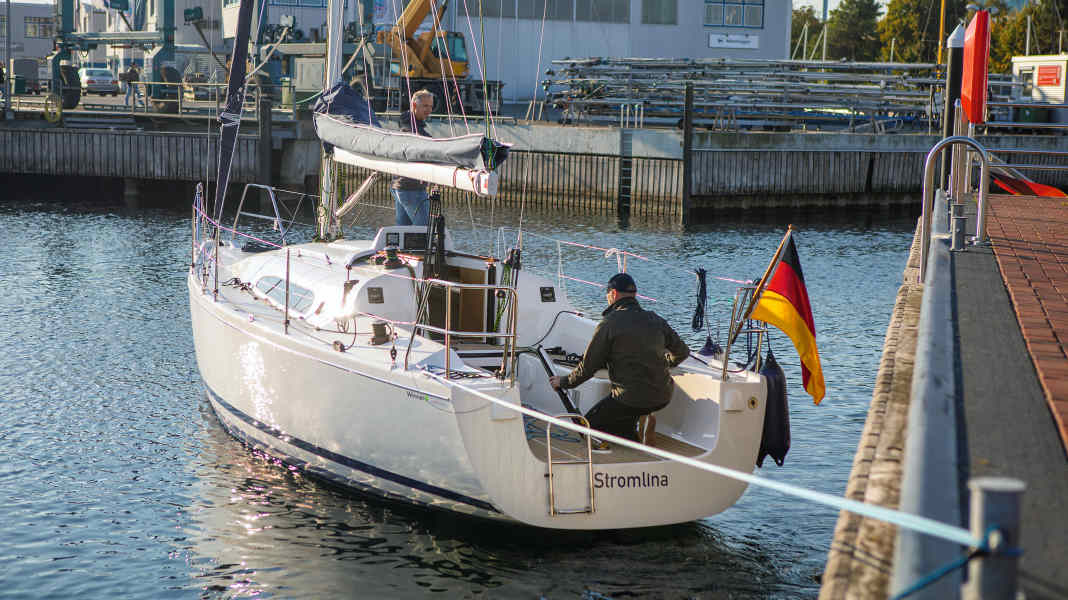Seamanship: Port manoeuvres: casting off alongside in a fully controlled manner
Lars Bolle
· 22.03.2022

If the wind blows offshore and parallel to the pier, the wind is even a helper. In all directions away from the jetty, all you have to do is untie the lines - the yacht will drift away from the berth by itself. If the wind is not coming from exactly 90 degrees offshore, but a little more acute from the front or aft, the drift direction only needs to be corrected slightly with engine thrust. The overall direction of movement remains drifting away from the berth.
If, on the other hand, the wind is onshore, the scenario changes fundamentally. It is no longer possible to simply drift away from the pier, as the yacht is forced onto the berth by the wind. Pushing off by hand is often futile or only possible as long as there is a very light wind. But even then it can be difficult if there are neighbouring berth holders, one in front of the bow and another at the stern. In this case, the distance ahead or aft is usually not enough to leave the berth in one go after pushing off with just the engine power. You often end up alongside one of the neighbouring berths.
But even pushing off becomes futile when the wind is stronger, because the wind pressure increases with the square of the wind speed. The following small calculation shows what this means: at 3 Beaufort, a square metre of surface that is exactly perpendicular to the wind must be pushed with around 1.8 kilograms to keep it in place. At 5 Beaufort, this is already around 7 kilograms (or Newtons). The areas of a ten-metre cruising yacht that can be affected by the wind add up to around 20 square metres. At 5 Beaufort, that would be roughly 140 kilograms. It would take a well-trained crew in the gym to push this off.
But what happens if you succeed in pushing the yacht half a metre or even a metre away from the pier? It will immediately drift back again, as the hulls of modern yachts are normally shaped like a U-frame. They lie flat on the water like bowls, so the hull can hardly resist being pushed sideways. And even the narrow modern appendages, which are very effective when sailing, are of little help against drifting when the boat is not travelling. So what to do?
In YACHT 7/2022, the classic manoeuvres of steaming into the fore spring and steaming into the aft spring are shown step by step. In addition, steaming into the windward stern line and a variation of this manoeuvre. Almost everyone can get out of the situation described above using one of these methods and they should be part of every crew's standard repertoire.
YACHT 7/2022 is now available at newsagents or can be ordered as a digital or print edition via the links below.
